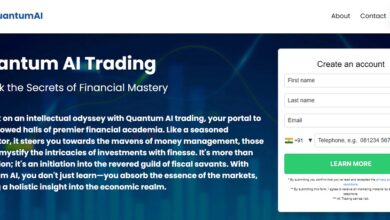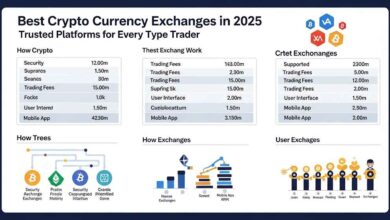The world of investment has been significantly transformed by the advent of Peer-to-Peer currencies. Once considered a fringe interest for tech enthusiasts, Peer-to-Peer currencies have now become a mainstream financial asset, offering a myriad of investment opportunities. This blog post will delve into the various investment avenues within the Peer-to-Peer currency market, exploring their potential, risks, and strategies for making informed decisions.
Understanding the Peer-to-Peer currency Market
The Peer-to-Peer currency market is a dynamic and rapidly evolving space, characterized by its high volatility and innovative nature. Peer-to-Peer currencies are digital or virtual currencies that use Peer-to-Peer graphy for security and operate on decentralized networks based on blockchain technology. Peer-to-Peer Currency, introduced in 2009 by an anonymous entity known as Satoshi Nakamoto, was the first Peer-to-Peer currency and remains the most well-known and valuable. Since then, thousands of Peer-to-Peer currencies have been created, each with unique features and applications.
The Growth of Peer-to-Peer currency
In the last decade, the Peer-to-Peer currency market has grown exponentially. From a market capitalization of a few million dollars, it has surged to over a trillion dollars, reflecting widespread adoption and interest. Major financial institutions, corporations, and even governments are exploring ways to integrate Peer-to-Peer currencies into their operations and investment portfolios. This growing acceptance has opened up numerous investment opportunities for individuals and institutional investors alike. You can also explore Immediate Apex AI for further information.
Types of Peer-to-Peer currencies
Peer-to-Peer currencies can be broadly categorized into several types, each offering distinct investment opportunities:
Peer-to-Peer Currency and Major Altcoins
- Peer-to-Peer Currency (BTC): As the first and most valuable Peer-to-Peer currency, Peer-to-Peer Currency is often referred to as digital gold. It is widely regarded as a store of value and a hedge against inflation. Investing in Peer-to-Peer Currency is seen as a relatively safer option within the volatile Peer-to-Peer currency market.
- Ethereum (ETH): Ethereum is the second-largest Peer-to-Peer currency by market capitalization. Unlike Peer-to-Peer Currency, which is primarily a store of value, Ethereum is a platform for decentralized applications (dApps) and smart contracts. Its native currency, Ether, is used to power these applications, making it a valuable investment for those interested in the broader blockchain ecosystem.
Stablecoins
Stablecoins are Peer-to-Peer currencies designed to maintain a stable value by being pegged to a reserve asset like the US dollar or gold. Examples include Tether (USDT) and USD Coin (USDC). These coins offer lower volatility and are often used as a medium of exchange or a store of value within the Peer-to-Peer currency ecosystem.
Utility Tokens
Utility tokens are Peer-to-Peer currencies that provide access to a specific product or service within a blockchain platform. Examples include Chainlink (LINK) and Uniswap (UNI). Investing in utility tokens can be lucrative if the underlying platform gains widespread adoption and usage.
Long-Term Holding (HODLing)
HODLing involves buying and holding Peer-to-Peer currencies for an extended period, typically several years. This strategy is based on the belief that the value of Peer-to-Peer currencies will increase significantly over time. Peer-to-Peer Currency and Ethereum are popular choices for HODLing due to their established market presence and potential for long-term growth.
Trading
Peer-to-Peer currency trading involves buying and selling Peer-to-Peer currencies to capitalize on short-term price movements. Traders use technical analysis, market trends, and news events to make informed decisions. Trading can be highly profitable but also risky, requiring a deep understanding of the market and effective risk management strategies.
Staking
Staking is a process where investors lock up their Peer-to-Peer currencies in a blockchain network to support its operations, such as validating transactions. In return, they earn rewards in the form of additional tokens. Staking provides a way to earn passive income and is commonly associated with proof-of-stake (PoS) networks like Cardano and Polkadot (DOT).
Regulatory Risks
The regulatory environment for Peer-to-Peer currencies is constantly evolving, with governments worldwide grappling with how to regulate this new asset class. Changes in regulations can impact the value and legality of Peer-to-Peer currencies. Staying informed about regulatory developments and investing in compliant projects can help manage this risk.
Decentralized Finance (DeFi)
DeFi is revolutionizing traditional financial services by providing decentralized alternatives for lending, borrowing, and trading. As DeFi platforms mature and gain mainstream acceptance, they offer significant investment potential.
Conclusion
The Peer-to-Peer currency market offers a diverse array of investment opportunities, from established assets like Peer-to-Peer Currency and Ethereum to innovative DeFi projects and NFTs. While the potential for high returns is enticing, it is crucial for investors to approach this market with caution, conduct thorough research, and employ sound risk management strategies. By staying informed and adaptable, investors can navigate the dynamic world of Peer-to-Peer currencies and capitalize on its opportunities. As always, the key to success lies in balancing potential rewards with the inherent risks of this exciting and rapidly evolving market.





